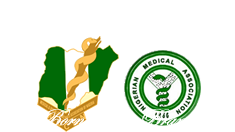Most Read Articles
sats
- Visitors
- 100307
- Articles
- 96
- Articles View Hits
- 3290784
NIGERIA MEDICAL ASSOCIATION
BORNO STATE CHAPTER OFFICIALS
Prof. Bukar Bakki -Chairman
Dr. Umar Loskurima - Vice Chairman
Dr. Kaka Mahdi Gazali – Secretary
Dr. Nasir Garba Zango – Assistant Secretary
Dr. Ali Maina Zubiru - Treasurer
Dr. Muhammad Abba Fugu - Financial Secretary
Dr. Abba M. Ibrahim - Social/Welfare Officer
Dr. Mukhtar Abubakar - Publicity Secretary
Prof. Modu Gofama Mustapha - Editor-in-chief
Dr. Ali Mohammed Ramat - Ex-officio I
Dr. Abdulhakeem M Ngulde - Ex-officio II
MEDICAL AND DENTAL CONSULTANTS’
ASSOCIATION OF NIGERIA, UMTH CHAPTER OFFICIALS
Dr. Babagana Usman – Chairman
Dr. Abubakar Farouk - Vice Chairman
Dr. Mohammed A.S. Abdullahi – Secretary
Dr. Abubakar Farate- Assistant Secretary
Dr. Aisha Abba Mohammed- Treasurer
Dr. Kefas M. Mbaya- Publicity Secretary
Prof. Modu Gofama Mustapha - Editor-in-chief
Dr. Hassan M. Dogo - Ex-officio I
Prof. Adamu Sadiq Abubakar - Ex-officio II



